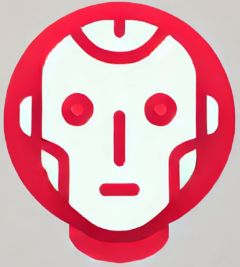AI Trends Shaping 2025 and Beyond
When IBM’s Deep Blue defeated world chess champion Garry Kasparov in 1997, few could have predicted how instrumental artificial intelligence would become across every sector—from healthcare to finance to creative arts. Fast forward to 2025, and AI is no longer just a tool; it’s a transformative force shaping industries, economies, and the very way we live, learn, and connect. AI trends shaping 2025 and beyond are poised to redefine not just tech, but life as we know it.
Hyper-Personalized AI Experiences
Consumer expectations for personalized experiences are rising rapidly, and AI is responding in kind. Whether it’s curating your news feed or recommending the next product, personalization driven by machine learning and behavioral analytics will become more intuitive and seamless.
- E-commerce: AI will predict not only what you want to buy but when you’re most likely to purchase it.
- Healthcare: Precision medicine will adapt treatments to your genetic profile and lifestyle patterns.
- Entertainment: Streaming platforms will create dynamic storylines tailored to your preferences.
AI-Driven Automation Expanding Beyond Repetition
By 2025, automation isn’t just about replacing manual labor; it’s about augmenting decision-making, synthesis of insights, and creative ideation. Advanced AI will collaborate with humans to handle complex tasks, driving efficiency without removing the human touch.
Industries Leading the Charge:
- Finance: AI advisors will provide real-time portfolio strategies customized to live market shifts.
- Manufacturing: Predictive maintenance and supply chain optimization will reduce costs and waste dramatically.
- Education: Intelligent tutoring systems will revolutionize how students learn and teachers guide.
The Emergence of AI Governance and Ethics
With the proliferation of machine learning and data-driven decisions, ethical questions are no longer theoretical. By 2025, expect stricter AI governance frameworks, data transparency requirements, and bias mitigation tactics.
Key Developments:
- Introduction of global AI usage standards akin to digital human rights.
- Widespread adoption of explainable AI (XAI) to ensure decision transparency.
- Regulatory bodies mandating audits of AI models for fairness and discrimination.
AI-Enhanced Creativity and Human Expression
As generative AI tools become more sophisticated, they are opening doors to new forms of artistry. Music, writing, visual design, and even fashion are being reimagined not just by creators, but with AI as co-author and collaborator.
Artists and technologists alike are exploring boundaries between human emotion and machine logic through tools like GPT-5, DALL·E, and Runway ML. This creative synthesis is not replacing human art, but amplifying it.
Preparing for the AI-First Future
To thrive in this AI-driven era, individuals and organizations alike must prioritize digital literacy, agility, and ethical alignment. Lifelong learning in areas like data fluency and critical thinking will be essential for navigating the ever-expanding AI landscape.
Want to stay ahead of the curve? Organizations like the Future of Life Institute offer resources on the safe and beneficial development of artificial intelligence.
Final Thoughts
The transformative AI trends shaping 2025 and beyond are about more than technological evolution—they’re about a new human-AI partnership. This convergence of machine intelligence and human ingenuity promises a future that is not only more efficient and automated but also more creative, personalized, and equitable.
As we continue to define AI’s role in our world, one thing is clear: the future is not just about smarter machines—it’s about empowering smarter societies.
